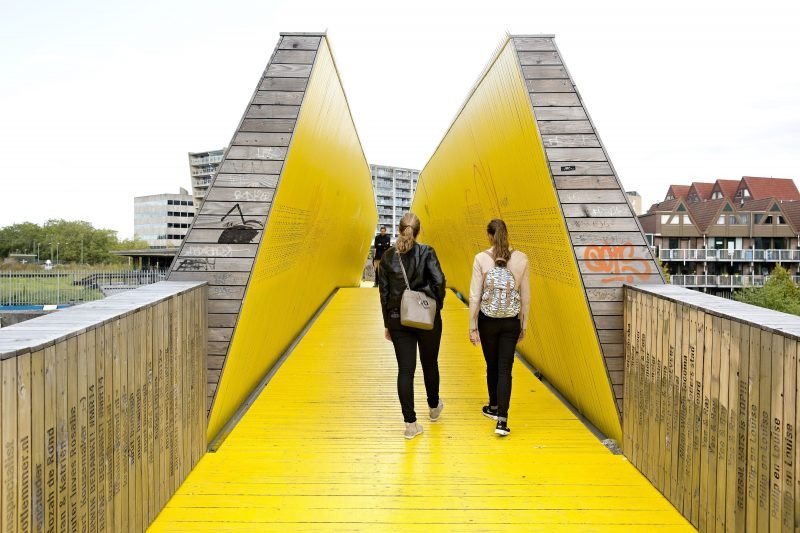The Temporary City
 Recently we received this great book called The Temporary City, written by Peter Bishop and Lesley Williams. The book came with a kind note by Williams that says that “we made extensive use of Pop-Up City in writing the book, so therefore I thought we owed you a copy”. Something to be proud of. 🙂 The topic of the book is pretty much our cup of tea since it discusses the basic element of this blog — temporary and flexible urban design and architecture.
Recently we received this great book called The Temporary City, written by Peter Bishop and Lesley Williams. The book came with a kind note by Williams that says that “we made extensive use of Pop-Up City in writing the book, so therefore I thought we owed you a copy”. Something to be proud of. 🙂 The topic of the book is pretty much our cup of tea since it discusses the basic element of this blog — temporary and flexible urban design and architecture.
The Temporary City is a great overview of, say, ten years of temporary urban initiatives and development efforts. Showcasing a rich variety of good practices, the book describes what has happened over the last years in planning and urbanism, when the pop-up trend became more relevant. Bishop and Williams focus both on theory and practice. On the one hand a wide range of urban interventions, bottom-up projects and design solutions are featured, but one the other hand the books poses the question why urban planning and design have always been so intrigued with permanence.
I think this is the right moment to come up with this book, as the temporary city discourse has been existing for a couple of years now and the moment has come to discuss its real value. What works and what doesn’t work? And should urban practice become less obsessed with permanence? The Temporary City gives a straight-forward answer: temporary urbanism is ready to become an integral part of ‘normal’ urban planning.

Urban Orchard by landscape architect Heather Ring, London
“There has been relatively little analysis of the importance of interim, short-term or ‘meanwhile’ activities in urban areas. In an era of increasing pressure on scarce resources, we cannot wait for long-term solutions to vacancy or dereliction. Instead, we need to view temporary uses as increasingly legitimate and important in their own right. They can be a powerful tool through which we can drip-feed initiatives for incremental change — as and when we have the resources — while being guided by a loose-fit vision.”
Although The Temporary City is pretty much written from an academic point of view, the book says not to be “the ultimate academic treatise on urban impermanence, neither is it a manual”. Instead, it’s “an enquiry, a reflection on the obsession with permanent urban outcomes, and an exploration of the different manifestations of, and undercurrents behind more transient urban phenomena”. Taking this role, The Temporary City is a decent and thorough-full document that combines inspiring examples with interesting academic reflections. The discipline of temporary urbanism is developing quickly, and new ideas and concepts pop up with ease. Therefore the book also shows many examples we’ve already seen, in a more profound context.

Loading bay, café, gallery space, Modern Art Oxford, by dRMM Architects
The book’s strength is its theoretical reflections and conclusions regarding possible new strategies in temporary urban planning. New forms of working together in planning, new strategies and new types of master-planning such as ‘flexible master plans’ and ‘tactical master plans’, are unfolded. It’s time to take temporary thinking seriously, and make it part of regular urban planning processes.
The Temporary City
Peter Bishop and Lesley Williams
Published by Routledge
248 pages
ISBN: 978-0-415-67056-2 (paperback), 978-0-415-67055-5 (hardback)
[adrotate banner=”3″]



